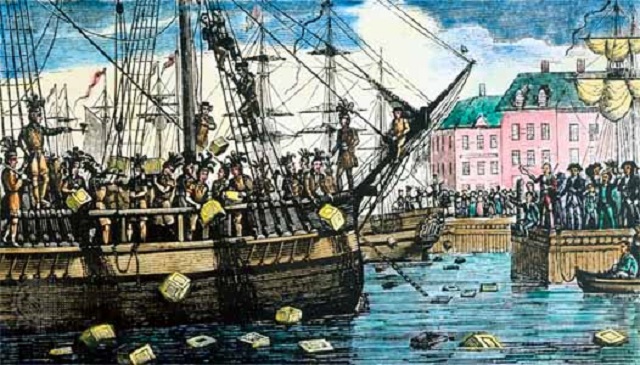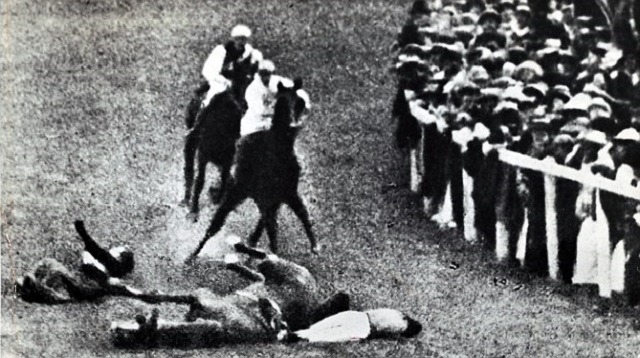John Tortorella, head coach of the NHL’s Columbus Blue Jackets and the Team USA entry into the World Cup of Hockey, is an idiot. Much like all the people who have commented on Colin Kaepernick’s quiet protest during the Star-Spangled Banner, Tortorella has mangled the “soldiers fight for our freedom” and “Kaepernick shouldn’t have the freedom to do this” logic to an extent that we hadn’t seen previously.
He invited a member of the U.S. Army to speak to his players and threatened to bench anyone on his team that sits during the playing of the national anthem. This is especially odious as coach of Team USA, who has just one black player, Dustin Byfuglien.
While the San Francisco 49ers and NFL have taken a “Hey, he can do what he wants” approach with Kaepernick, Tortorella is threatening to choke out his players with a red, white and blue rope if they choose to sit for 80 seconds to show solidarity with Kaepernick.
This got me wondering — how would Tortorella have handled other protests looking to advance social causes throughout history?
Let’s take a look, shall we?
The date: December 16, 1773
The protest: The Boston Tea Party
The cause: Taxation without representation. Englishmen believed they should be taxed only by their own elected representatives and not by the British. They tossed a shipment of tea into the Boston Harbor, an event that helped trigger the American Revolution.
We go live to the media availability of cricket coach John Tortorella on Dec. 17, 1773.
Reporter: “Coach, can you talk about the Boston Tea Party? Would you be upset if one of your players protested taxation by an unelected King?”
Tortorella: “If one of my batsman or biffers or wicket keepers dressed as Native Americans and threw tea into a harbor, I’d bench them. Do I believe in the rights of Englishmen? Do I believe an Englishmen has the freedom to protest if he sees fit? Yes, but there’s a time and a place and that’s not it.
My son works for the East India Tea company. Those men risk a lot by sailing across an ocean. When you throw white tea, black tea or even chamomile into a body of water, you disrespect the men of that company. My father is a member of the British Parliament and we should pay him — preferably in pounds, shillings or beaver pelts — respect.”
The outcome: Tortorella was killed during the revolution while fighting for the British.
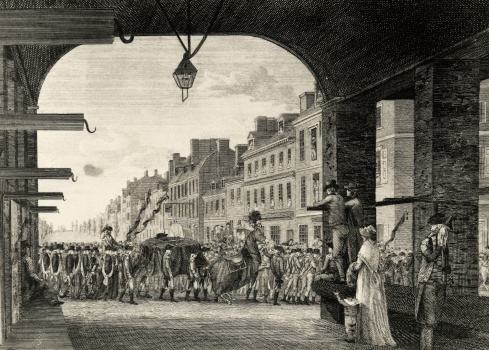
The date: December 29, 1799
The protest: Richard Allen, a champion of the abolitionist movement and a black man, spoke at George Washington’s funeral about the need to rid the country of slavery.
The cause: Freeing slaves.
We go live to the media availability of boxing trainer John Tortorella on Dec. 30, 1799.
Reporter: Trainer, can you talk about Richard Allen using the platform of George Washington’s funeral to speak about the abolishment of slavery?
Tortorella: “If one of my fighters ever chose to do something like that at a holy event like a funeral, I’d ban him from the ring. Do I believe in the notion that all men are created equal? Yes, but Richard Allen should know his place and keep his mouth shut.”
Reporter: “Isn’t you saying that Richard, a black man, should know his place in the same breath that you said all men are created equal, isn’t that a conflict of ideas that is impossible to reconcile?”
Tortorella: [waves American flag over his head]
The outcome: Tortorella died of natural causes in 1822 and 14 black men spoke about ending slavery at his funeral.
The date: June 4, 1913
The protest: Emily Davison was a British woman who ran on the track during a horse race as she fought for the cause of woman’s suffrage in England. She stepped in front of King George V’s horse and suffered injuries that resulted in her death four days later.
The cause: Equal rights for women.
We go live to the media availability of horse trainer John Tortorella on June 9, 1913.
Reporter: “Trainer, can you talk about the death of Emily Davison? Would you be upset if one of your daughters protested inequality among women by interfering with a horse race?”
Tortorella: “If one of my daughters, sisters or my wife stepped in front of a beautiful steed like this [Tortorella gently pets a horse for 25 seconds] she’d be banished from my home and left to fend for herself on the cold streets of London. Do I believe women should be treated fairly in our society? Not if it comes at the cost of a life.”
Reporter: “So you admit Davison’s death was a tragedy that–”
Tortorella: “I mean the horse. King George’s horse survived but what if the next horse isn’t so lucky?”
The outcome: Tortorella’s wife left him, his family disowned him, and he died alone in a stable with his horses.
https://youtu.be/XqEfeEzaulc
The date: March 12, 1930
The protest: The Salt March
The cause: Mohandas Ghandi led a 24-day march in colonial India to non-violently protest British taxation on salt production.
We go live to the media availability of field hockey coach John Tortorella on March 27, 1930.
Reporter: “Coach, can you talk about Ghandi’s salt march? If one of your players took part in a march to reclaim lost rights due to British occupation, how would you react?”
Tortorella: “Does Ghandi have a point? Sure. But if any of my players stood up — metaphorically, because everyone here knows the importance I place on standing — for their salt beliefs, I’d bench them right away. I respect salt too much to take it out of the sea for free.”
The outcome: You know the scene in the Harrison Ford movie Witness when the bad guy gets drowned in the corn silo? That, only the bad guy is Tortorella and the silo is filled with salt.
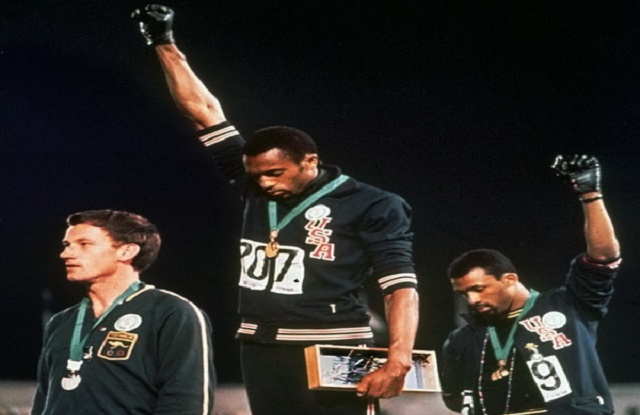
The date: October 16, 1968
The protest: The Black Power Salute
The cause: After winning medals at the Mexico City Summer Olympics, Tommie Smith and John Carlos stood on the podium and raised their fists during the U.S. anthem. Smith would say of the gesture, “If I win, I am American, not a black American. But if I did something bad, then they would say I am a Negro. We are black and we are proud of being black. Black America will understand what we did tonight.”
We go live to the media availability of U.S. track and field coach John Tortorella on Oct. 17, 1968.
Reporter: “Coach, can you talk about Tommie and John’s raised fists on the podium last night? They did it during the national anthem so we thought you’d have something to say about it.”
Tortorella: “If you’re not going to stand during the anthem, there’s no place for you on my team. I will drag you off the track and make you–”
Reporter: “No, coach, they stood. I thought standing was the only important thing to you.”
Tortorella: “Oh. Well, the raised fist. That’s disrespectful to the troops. They risk life and limb for the freedom to–”
Reporter: “Well, what if the fist is raised but it’s in excitement of winning? Or a gesture to a family member in the crowd?”
Tortorella: “[Tortorella glances nervously around the room] OK, fine. You have to stand during the anthem, but you can’t raise your fist, unless that fist is raised in love for the flag, the troops and the song. Otherwise, you are not a real American.”
Reporter: “Well what if you’re angry at America because a soldier friend died in a needless war and inside that raised fist is a Purple Heart he won?”
Tortorella: [his head explodes]
The outcome: His head exploded and he died.
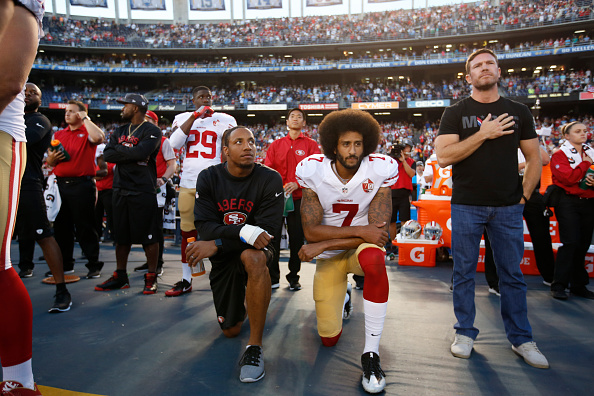
WHAT ABOUT ONE MORE FOR THE FUTURE?
The date: October 23, 2016
The protest: A soldier sits during the anthem at an NFL game
The cause: A highly decorated Marine remains seated during the national anthem as a way of showing his displeasure with the NFL and sports leagues using soldiers as props and misunderstanding that the reason he partook in three tours of duty in Afghanistan was so Americans can have the right to sit during the national anthem.
We go live to the media availability of track and field coach John Tortorella on Oct. 17, 2016.
Reporter: “Coach, can you talk about the soldier sitting during the anthem as a way to shine a light on people trying to deny Americans their right to protest by using the image of dead soldiers to do so? Is he disrespecting himself?”
Tortorella: [leaves cartoon-sized Tortorella hole in a wall to get away from questions]
The outcome: Tortorella never spoke in public again.


